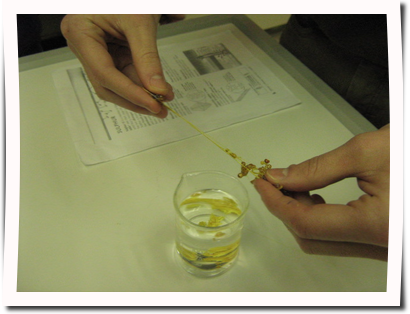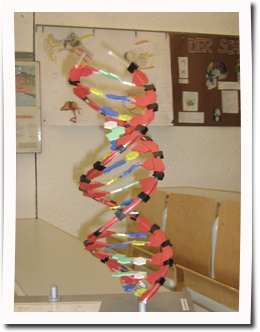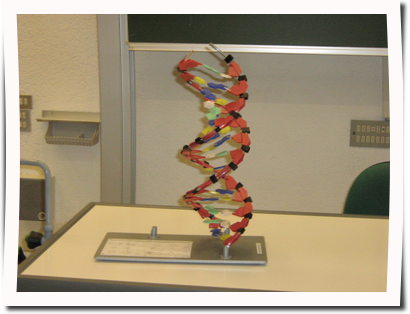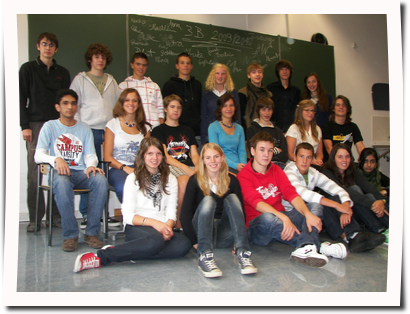Christian Villscheider
Donnerstag, 7. Januar 2010
|
|

|
Steinmann Nadia
Donnerstag, 7. Januar 2010
|
|
On the last day before Christmas holidays we had the possibility to meet Joana. She told us about her life in Seattle and we learnt about the American school system. We watched also a short speech given by President Obama. The speech was addressed to the young generation. He told the students about their responsibility.
Afterwards we had time to discuss and ask the following questions:
1) Why did you decide to move to South-Tyrol?
2) What’s the difference between the young people in America and the young people here?
3) What do you think about the prohibition of alcohol until 21?
4) What do you think when you see 16-year-old people drinking alcohol?
5) Which school system is the better one?
6) How did the American people react when you decided to move?
7) Is the American way of life the same as in the movies?
8) How do you manage conversation with South-Tyrol people?
9) What can you say about the recent economic problems in America?
10) What is the climate in Seattle like?
11) Where Americans do usually spend their holidays?
12) Do you have any children? If yes, where do they go to school? If not, what would you do with them in this situation?
13) How do Americans spend their free time?
14) Where did you go to university?
15) Is the captain of the football team always the dream guy?
16) How is chemistry taught in Seattle?
17) What do you think about our project?
|
Cuccarollo Ernest
Donnerstag, 7. Januar 2010
|
|
Which idea was Schroedinger fascinated with ?
Of the application of physics to the study of biology.
What did Schroedinger propose in his book?
His suggested investigating genes at the molecular level besides other issues.
What idea was Francis Crick driven by?
Schrödinger’s book triggered Crick to change his career plans from particle physics to biology.
When did Crick and Watson share the Nobel Prize and which discipline did it refer to?
Crick and Watson shared the Nobel Prize in medicine in 1962.
What idea did he hint at in the book: Life Itself: Its origin and Nature?
He hinted at the possibility that the origin of life might come from another planet.
What did scientists need to understand, although it was largely accepted that the DNA was the molecule of life?
They had to comprehend the structure of the molecule to be sure how it was working.
What kind of analysis did Watson and Crick make on DNA?
They figured that the molecule was made of two chains of nucleotides.
What information did Watson and Crick put together to get the structure of the DNA?
Chargaff’s discoveries about base pairs.
Why is DNA composed of two strands?
Because they separate during cell division.
|
Cuccarollo Ernest
Donnerstag, 7. Januar 2010
|
|

|
Cuccarollo Ernest
Donnerstag, 7. Januar 2010
|
|

- DNA stands for desoxyribose nucleic acid
- DNA is a very large molecule made up of a long chain of sub-units
- The sub-units are called nucleotides
- Each nucleotide is made up of sugar called desoxyribose, phosphate group -PO4 and an organic base
- The most common organic bases are: Adenine. Thymine, Guanine and Cytosine
- A molecule of DNA is formed by millions of nucleotides joined together in a long chain
|

Alexander Klement
Dienstag, 22. Dezember 2009
|
|
Hello everybody,
We would like to present you our project about billingual chemistry. Twice a week we do our biology lesson in English to improve both biology and English skills at the same time. We have a lot of fun (also with our teachers :P).
At first we were doubtful, but now we love it, because we do interesting experiments and execises.
You can see the various categories with lots of information. We are working hard to enlarge our amount of blog entries and we hope you will like it!!
Maximillian Spögler, Tiziano Weiß and Alexander Klement

---------------------------------------------------------------------------------------------------
Mfg Kalle, Spöglor und Tiz
Rechtschreibfehler sind beabsichtigt und dienen der allgemeinen Belustigung :D
|
Philipp Plattner
Dienstag, 22. Dezember 2009
|
|
Francis Crick’s family moved to London during the economic slump of 1929. At school Crick was especially interested in physics, chemistry and mathematics.
During the WW2 he joined the British Admiralty Research Laboratory, developing radar and mines for naval war. After the war he read Erwin Schrödinger’s book about Physical Aspects of the Living Cell. Crick switched from physics to biology.
Crick began working at the Cavendish Laboratory at Cambridge. In 1951, an American biologist, James Watson, joined the lab ant the two formed a close working relationship.
They were convinced that if the three-dimensional structure of a molecule known to play a role in passing genetic information-DNA-could be determined, the way genes are passed on might also be revealed. They were getting closer, as were other scientist chasing the same goal; a race was heating up. Watson and Crick shared the Nobel Prize in physiology/medicine in 1962. He also became director of Cambridge University’s Laboratory. He wrote two books: Of Molecules and Men (1966) and Life itself: Its Origin and Nature (1981).
|





















Kategorie:
sulfur